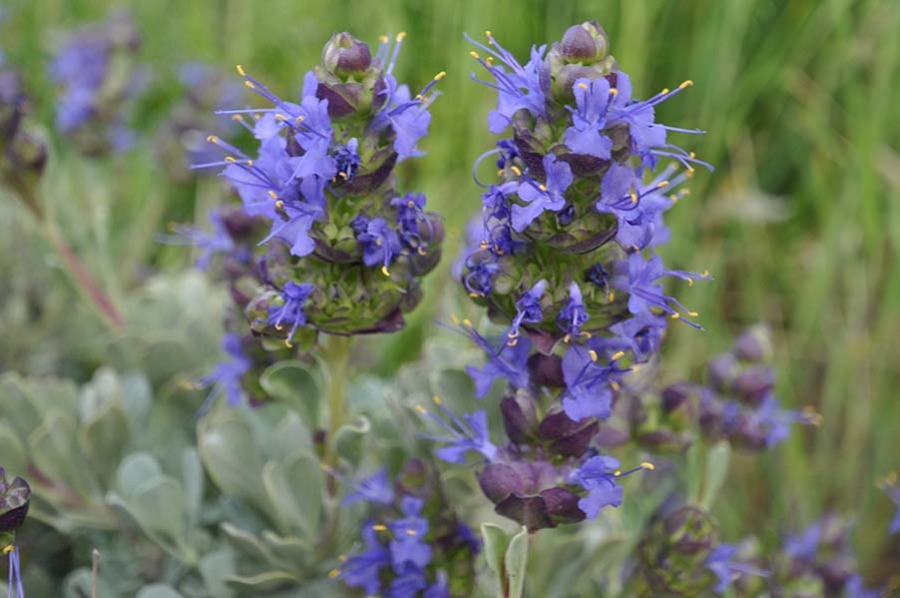
Sego Supreme™ Plant Introduction Program
Sego Supreme™ is an innovative plant introduction program at Utah State University which develops, evaluates, and promotes new, well-adapted plant cultivars for the growing conditions of the western United States. While regional in focus, the program’s plants are selected with the intent that they can be grown successfully in a variety of climates and conditions.
Established in 2013, Sego Supreme™ is currently working with industry professionals, throughout the United States, to trial and evaluate new plant cultivars. These selected plants offer drought tolerance, improved ornamental attributes, and proven dependability in both professional and home landscapes.
Sego Supreme™ markets its proven introductions regionally and nationally and sales support ongoing breeding and research efforts at Utah State University's Botanical Center in Kaysville, Utah.
Sego Supreme™ Plant Introductions:
Sol Dancer™ daisy

Sol Dancer™ Daisy (Tetraneuris acaulis var. arizonica ‘Sol Dancer’™), is a hardy, tufted perennial developed by the Utah State University Botanical Center for landscapes across the Intermountain West. It performs superbly as a low accent in both formal and naturalized plantings. It blooms regularly from spring through fall. In fact, when frosts have been delayed, its blooms have remained late into November. It generally will not get larger than 15” tall or wide, and its yellow, coin-shaped flowers combine nicely with other water-wise plants, especially Wasatch Fire™ firechalice, another Sego Supreme™ selection, for an amazing fall display. It is recommended for dry, sunny areas of the garden. Regular deadheading, although not necessary, will extend the bloom during the growing season and help maintain a tidy appearance.
The name Sol Dancer™ was inspired by the way the flowers move on a sunny, windy day. The intent of this release is to make available selected plant material of Tetraneuris acaulis var. arizonica from a known provenance and having predictable performance traits for the nursery and landscape trade and water-wise home landscapes.
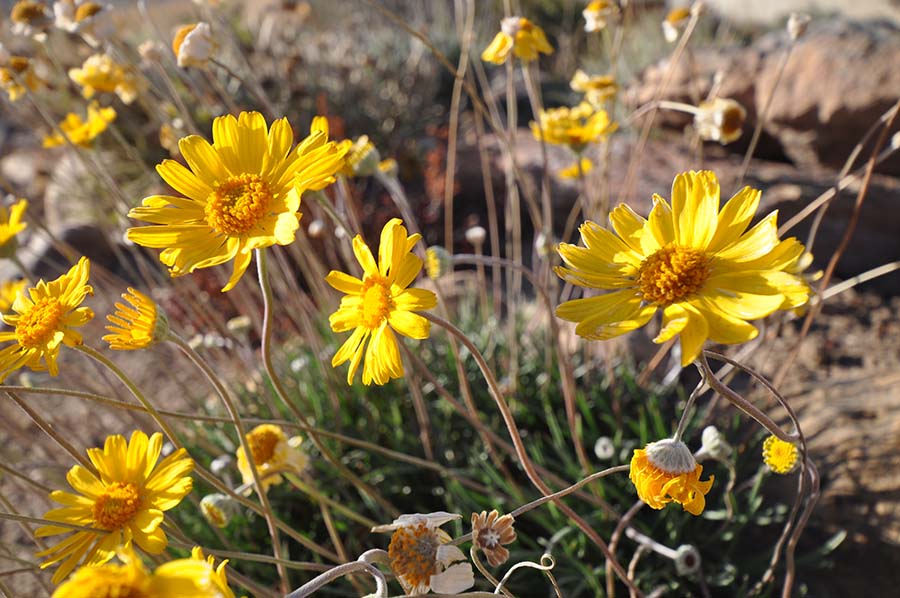
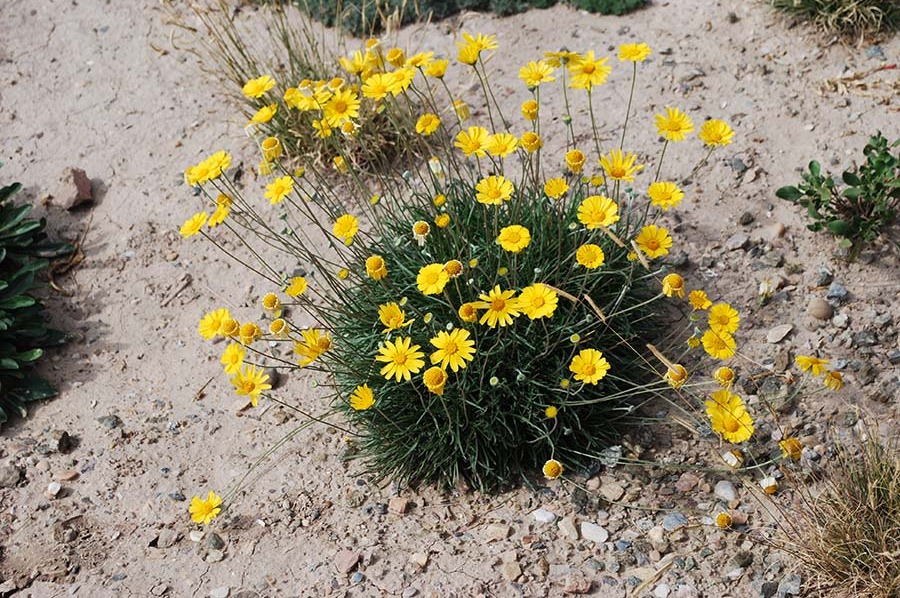
Wasatch Fire™ firechalice
 Plants of the intermontane plateaus have evolved to take advantage of the natural timing of water availability, which comes mostly in the form of winter snow and early spring and fall rains. Remaining comparatively sedate throughout the months of spring and summer, Wasatch Fire™ Firechalice (Epilobium canum subsp.garrettii 'Wasatch Fire') leaps into color as summer heat gives way to shorter days and cooler nights. A once-over spring pruning reveals foliage tinged with red along the stems and underneath the leaves. As the days warm, the foliage transitions into a luxurious green mound some 18 inches tall and wide. Deep, red flowers, held close to the foliage, bring loads of fall attention to the garden only to quickly become a favorite feeding station for hummingbirds.
Plants of the intermontane plateaus have evolved to take advantage of the natural timing of water availability, which comes mostly in the form of winter snow and early spring and fall rains. Remaining comparatively sedate throughout the months of spring and summer, Wasatch Fire™ Firechalice (Epilobium canum subsp.garrettii 'Wasatch Fire') leaps into color as summer heat gives way to shorter days and cooler nights. A once-over spring pruning reveals foliage tinged with red along the stems and underneath the leaves. As the days warm, the foliage transitions into a luxurious green mound some 18 inches tall and wide. Deep, red flowers, held close to the foliage, bring loads of fall attention to the garden only to quickly become a favorite feeding station for hummingbirds.
The species naturally inhabits rock crevices and cliffs and its ability to spread is contained in such substrates; however, in the garden Wasatch Fire™ can expand up to 2.5 ft. It is tolerant of poor soils, demands lots of sun, and needs approximately an inch of water every two weeks to remain looking vibrant, often remaining blooming even after a few fall frosts.
Its name was inspired by its fiery red flowers and its origin from the Wasatch Mountains of Utah. The intent of
this release is to make available for the nursery and landscape trade selected plant material of Garrett’s firechalice that has maroon-red spring foliage, red flowers, and blooms late in the growing season.
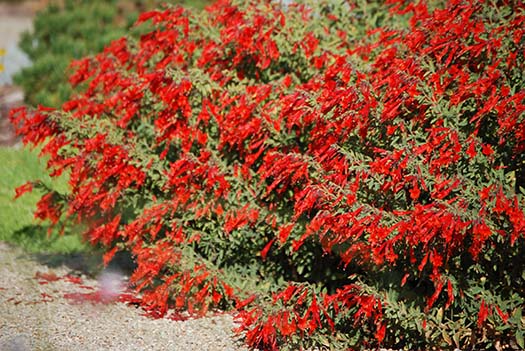
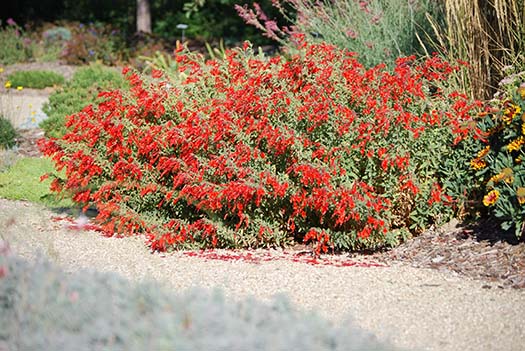
Uvatüng™ beardtongue
 Uvatüng™ beardtongue (Penstemon platyphyllus ‘Uvatüng’™) is endemic to areas confined strictly to northern Utah.This narrow endemic is unique because it offers a pleasing fragrance in comparison to other beardtongues. Uvatüng™ is shrubby at the base, with numerous, erect stems 18 to 24 in. long emerging from a woody crown. The flowers are lavender to pale violet and often held in clusters. The flowers are pleasantly fragrant, comparatively more so than all other beardtongues. Uvatüng™ was selected for its larger flowers and improved fragrance. It is common to rocky slopes and cliffs, and for this reason it is perfectly suited for rock and xeric gardens throughout areas of the Mountain West, in valleys, foothills, and higher elevations.
Uvatüng™ beardtongue (Penstemon platyphyllus ‘Uvatüng’™) is endemic to areas confined strictly to northern Utah.This narrow endemic is unique because it offers a pleasing fragrance in comparison to other beardtongues. Uvatüng™ is shrubby at the base, with numerous, erect stems 18 to 24 in. long emerging from a woody crown. The flowers are lavender to pale violet and often held in clusters. The flowers are pleasantly fragrant, comparatively more so than all other beardtongues. Uvatüng™ was selected for its larger flowers and improved fragrance. It is common to rocky slopes and cliffs, and for this reason it is perfectly suited for rock and xeric gardens throughout areas of the Mountain West, in valleys, foothills, and higher elevations.
The species is durable, considered long-lived, and drought tolerant. It is best suited for sunny locations in the garden. Its name was inspired by its grape-colored flowers (uva is Spanish for grape.) The intent of this release is to make available for the first time selected plant material of Penstemon platyphyllus for the nursery and landscape trade and waterwise home landscapes.
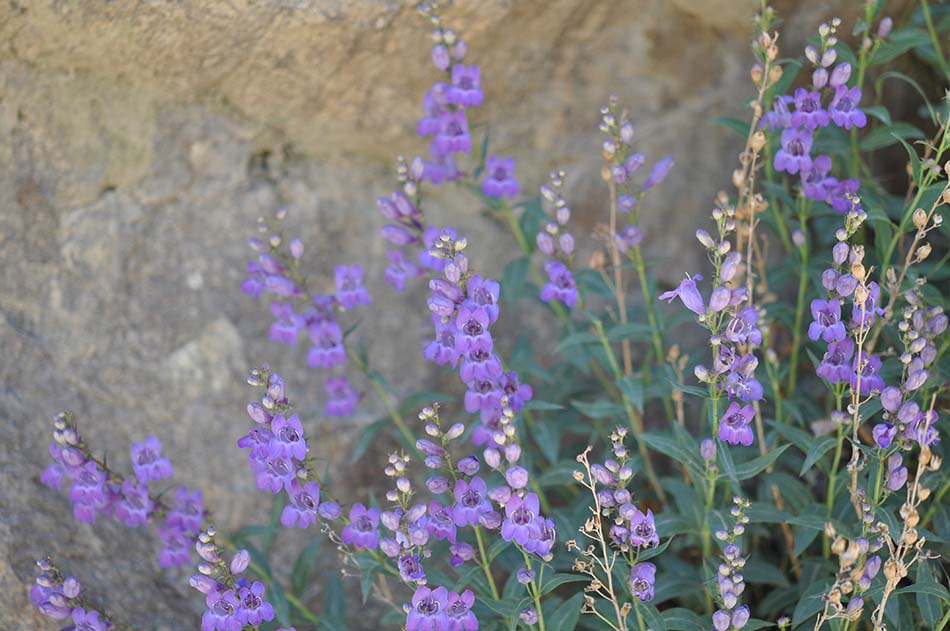
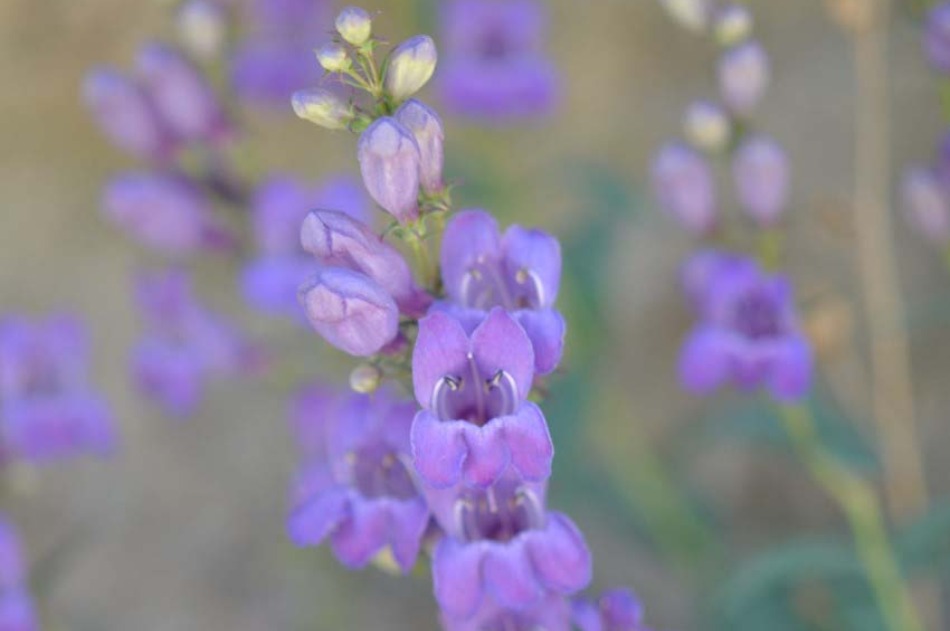
Purple Chip™ salvia
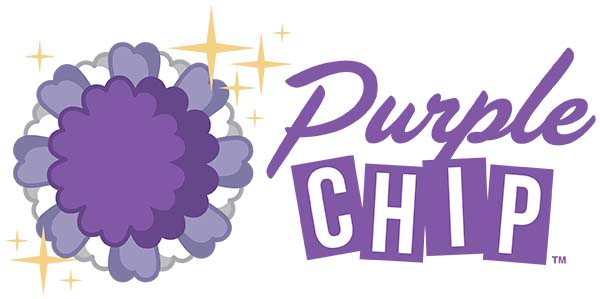 Purple Chip™ salvia (Salvia dorrii var. clokeyi ‘Purple Chip’™) offers a small 6 -12 inches tall and 2-3 feet wide, mat-forming, drought tolerant shrub. Each plant seasonally produces 4-6 inches of new growth along with a profusion of flowering branches each spring. Depending on variable climatic conditions, over-all bloom time can prolong for as much as 3 weeks. Additional garden interest includes attractive rough and peeling bark on mature, woody branches, and grayish-blue spoon-shaped leaves. It will adapt well to landscape sites in full sun, where garden soils are naturally shallow, rocky, or gravelly.
Purple Chip™ salvia (Salvia dorrii var. clokeyi ‘Purple Chip’™) offers a small 6 -12 inches tall and 2-3 feet wide, mat-forming, drought tolerant shrub. Each plant seasonally produces 4-6 inches of new growth along with a profusion of flowering branches each spring. Depending on variable climatic conditions, over-all bloom time can prolong for as much as 3 weeks. Additional garden interest includes attractive rough and peeling bark on mature, woody branches, and grayish-blue spoon-shaped leaves. It will adapt well to landscape sites in full sun, where garden soils are naturally shallow, rocky, or gravelly.
Established plants needed no more than 2 inches of monthly precipitation to remain vibrant in the landscape. The Purple Chip™ selection offers blooms larger than the type, var. dorrii, and a prostrate habit. Until now, this has not been available in the industry. Its name was inspired by the proximity of the collection site to Las Vegas and because the flower color and prostrate habit is similar to that of a $500 poker chip. The intent of this release is to make selected plant material for the nursery and landscape trade available for the first time.

